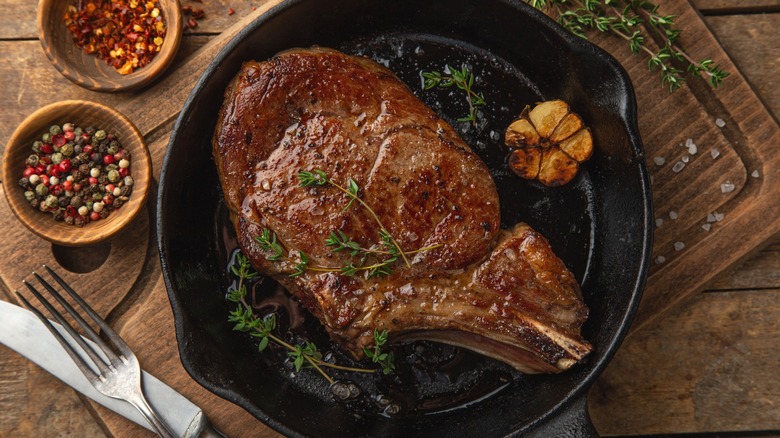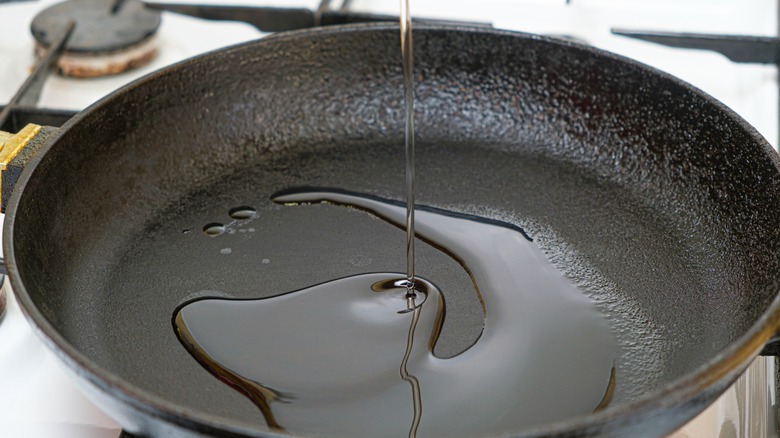The Common Cast-Iron Mistake That Ruins Perfect Steak Sears
We may receive a commission on purchases made from links.
You can absolutely cook a steak in the oven, but ideally, it gets some attention in a cast-iron skillet beforehand to impart the perfect sear. Coating the steak in cornstarch can help in that regard, but truth be told, the most significant factor is having just the right amount of heat. However, cast iron doesn't function quite like stainless steel or non-stick pans, and the point at which you add your oil can make or break that exceptional crust you want on the outside of your meat.
Lamar Moore, a Food Network celebrity chef and winner of the hit TV series "Vegas Chef Prizefight," explained why it's crucial to preheat a cast-iron pan before attempting to obtain an impeccable steak sear. "Cast iron takes longer to heat, but once hot, it holds heat very well," he said. "Preheating ensures the whole pan (not just the center) is evenly hot."
Yet, preheating a cast-iron skillet with oil already added is a mistake that will hinder your ability to attain an ideal sear. "When the pan is hot enough before adding oil, the oil bonds with the seasoning layer and creates a slick cooking surface," Moore said. "Too cold and the food sticks. Too hot, and the oil smokes and can burn."
You're looking for that perfect Goldilocks temperature right in the middle. "When done correctly, oiling your pan will help prevent any sticking from happening and maintain the shape and texture of your steak every time," Moore said. Figuring out when exactly the pan is hot enough might seem tricky without the assistance of an infrared thermometer like this Etekcity Infrared Thermometer, but Moore indicated it's not as complicated as it may sound.
Two ways to check whether your cast-iron pan is ready for oil
You might think that a professional chef like Lamar Moore would have some secret, cheffy technique up his sleeve to determine when a cast-iron pan is hot enough to add oil, but it's actually quite simple. Moore mentioned two ways to check the heat, and neither requires any special tools. The first: "Hold your hand 2–3 inches above the pan. If you feel strong, consistent heat radiating off the surface, it's ready," Moore said.
The second way to ascertain whether the skillet is ready to receive oil is a trick many home cooks are already familiar with. "Flick a few drops of water onto the pan," Moore said. "If they just sit and bubble slowly, the pan is too cold. If they sizzle and evaporate instantly, the pan is hot. If they 'dance' and bead up like little balls gliding across the surface, you have the perfect temp."
Of course, adding the oil to your cast-iron skillet at the correct time isn't the only factor that contributes to an appetizing sear on steak. Moore pointed out two key factors that go a long way to achieving a superb crust. "My first tip is to just flip once," he said. "Second, even though it is tempting, avoid checking or messing with your steak too much." Once it's done to your liking, don't be too hasty about digging in lest you end up losing all the juicy flavor on the inside. "I suggest allowing your meat to rest once it comes off the heat for at least 5 minutes, so the juices absorb into the meat rather than draining onto your plate," Moore said.

